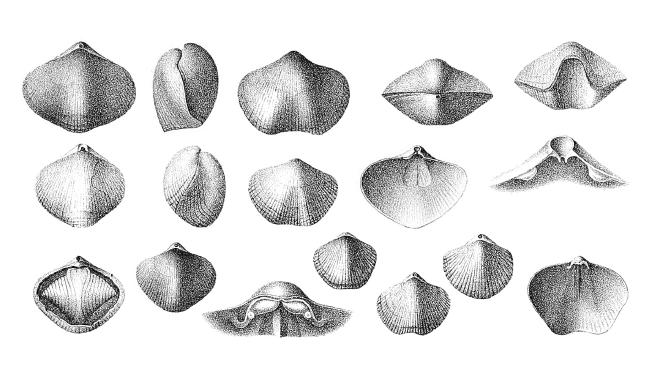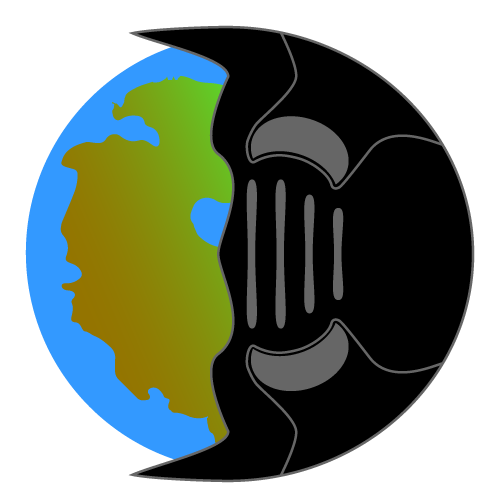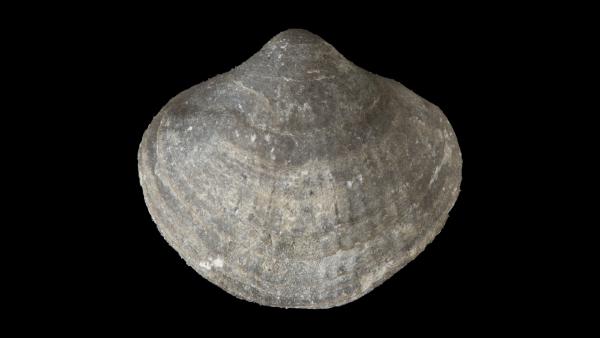Scientific Classification
| Kingdom: Animalia |
| Phylum: Brachiopoda |
| Class: Rynchonellata |
| Order: Athyridida |
| Family: Parazygidae |
| Genus: Parazyga |
| Species: Parazyga hirsuta (Hall, 1857) |
Information
Geological Range
Paleogeographic Distribution
Stratigraphic Occurrences
References
Hall (1867): (as Trematospira hirsuta): p. 274, pl. 45.
Linsley (1994): p. 193, figs. 16-32.
Wilson (2014): pp. 108, 109.
Remarks
Originally described as Atrypa hirsuta by Hall in 1857. Recombined as Trematospira hirsuta by Hall in 1860. Recombined as Parazyga hirsuta by Hall and Clarke in 1893.
From Wilson (2014, p. 108): “Shell wider than high, biconvex. Pedicle valve beak incurved. Sinus and fold well developed, especially toward margin. Surface covered with fine ribs with short spine bases. To 20 mm.”
From Carlton Brett and Gordon Baird: “Parazyga hirsuta, which occasionally shows very tiny spines on its exterior (hence, hirsute), is a rare though long-ranging (Eifelian-Givetian) and widespread brachiopod. It is virtually restricted to high diversity brachiopod-coral biofacies with an occurrence that closely resembles Pentamerella, Leptospira and other highly stenotopic brachiopods. Despite their rarity, these environmentally restricted Eastern Americas Realm brachiopods managed to survive through most of the Middle Devonian and recur with fidelity in appropriate facies. Surprisingly, the species is noted in the Traverse Group in the Michigan Basin, as well as Centerfield correlatives in the Prout and Beechwood; the only relatively common occurrence of this brachiopod is in similar facies of the Jaycox Member in western New York. Here it is one of the most frequently bored brachiopods, despite its hirsute surface (Smith et al., 1986, Science).”
Online Resources
Media
Images



